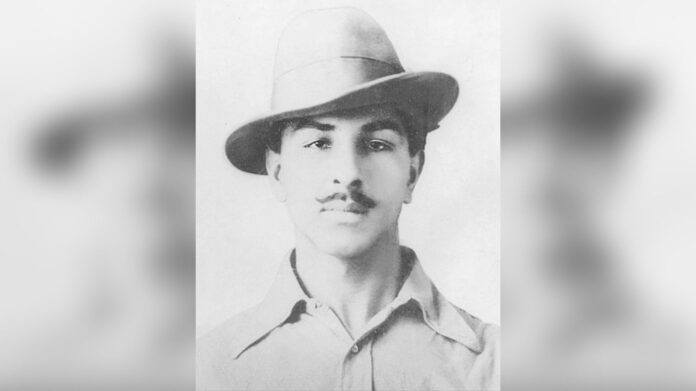SHILLONG:
Bhagat Singh, an Indian revolutionary and a major figure in the Indian independence movement of the early Twentieth Century was born on September 28, 1907, at Banga in Lyallpur district (now Pakistan) to Kishan Singh and Vidyavati.
At the time of his birth, his father Kishan Singh, and his uncles were jailed for demonstrations against the Colonization Bill implemented by the British in 1906. The politically aware environment at home helped incite a sense of patriotism in the heart of young Bhagat Singh.
He also worked as a writer and editor in Amritsar for Punjabi- and Urdu-language newspapers espousing Marxist theories. Singh was active in revolutionary struggle from an early age, and he was briefly affiliated with Mahatma Gandhi’s “Non-Cooperation” movement, although Singh disagreed with Gandhi’s philosophy of nonviolent resistance later on.
Bhagat Singh embraced atheism and Marxism-Leninism in which he integrated these key components into his philosophy of revolutionary struggle. The Kirti Kissan Party, under his leadership was renamed the Hindustan Socialist Republican Organisation.
As Singh and his organisation rose to new prominence in the Indian independence movement, they became the focus of public criticism from Gandhi himself, who disagreed with their belief that violence was a necessary and vital component of revolutionary struggle.
British Imperialism used every tactic to create a ‘Divide and Rule’ policy among the different religions of India, especially between Hindus and Muslims, Therefore, Bhagat Singh removed his beard which was a violation of Sikh religion, because he did not want his public image to be seen as a ‘Sikh’ freedom fighter.
He wanted to teach the Indian people that British Imperialism was their common enemy and they must be united together regardless of religion, to attain their freedom.
In 1924, Bhagat Singh and his compatriot B. K. Dutt hurled two bombs on to the floor of the Central Delhi Hall in New Delhi. The bombs were tossed away from individuals so as not to harm anyone. Following the explosions, Singh and Dutt showered the hall with copies of a leaflet that later was to be known as ‘The Red Pamphlet’.
Singh and Dutt concluded the pamphlet with the phrase “Inquilab Zindabad!” (“Long live the revolution”) and it became one of the most prominent slogans of the Indian Independence Movement.
Singh and Dutt turned themselves to the British government following the bombing incident and was sentence to prison. While in jail, Singh helped organise a hunger strike to protest against prisoner mistreatment, a demonstration that helped him gain wider support in India.
Shortly after the commencement of his prison sentence, Singh was charged for the murder of a Deputy Police Superintendent in 1928. Bhagat Singh plotted to kill the police chief responsible for the death of Indian writer and politician Lala Lajpat Rai, during a silent march opposing the Simon Commission. He instead mistakenly, killed another officer. He acknowledged involvement in the death and on 23 March 1931, he was executed by hanging at the age of 23 years.
Bhagat Singh is widely hailed as a martyr as a result of his execution at the hands of oppressors which he is often referred to as “Shaheed (Martyr) Bhagat Singh.”
He is considered one of the foremost revolutionaries in India’s struggle for freedom through self-supreme sacrifice and strategic planning that eventually made him a hero amongst millions of Indians. He believed that only through Universal love, where everyone in the world was part of a single loving family, would the revolution be complete. In such a world, there would be no more hunger, no more war, and no divisions within humanity.


